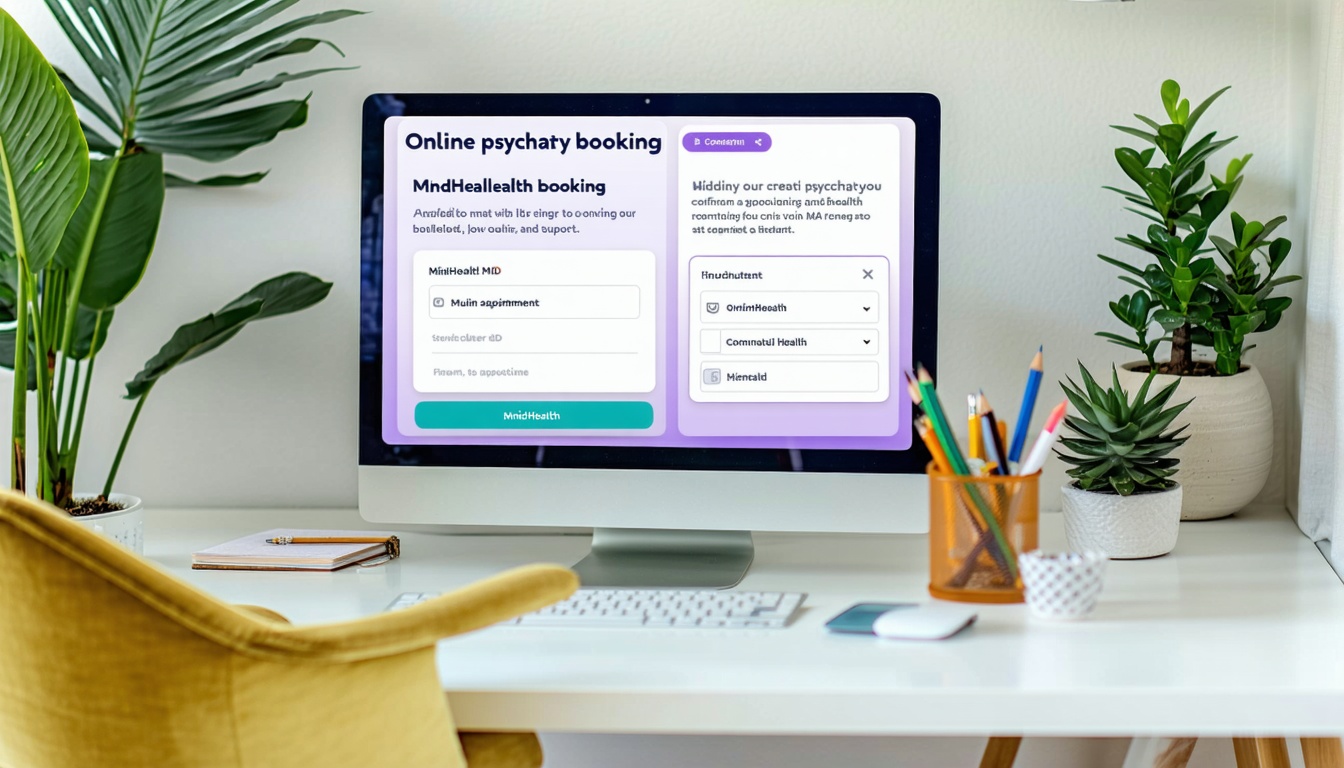The Benefits of TMS Treatment
Transcranial Magnetic Stimulation (TMS) offers substantial benefits for those seeking treatment alternatives for mental health conditions without the use of medication. This innovative therapy is designed to improve your overall well-being.
Noninvasive and Effective
TMS is a noninvasive treatment technique using a magnetic field to influence brain activity, particularly for conditions like depression and obsessive-compulsive disorder [1]. This effectiveness makes TMS an appealing option for individuals who have not found success with traditional treatments. The therapy is also beneficial when other approaches have proven ineffective.
TMS is known not only for its effectiveness but also for being a safe option compared to many invasive procedures. The absence of surgery means you can receive treatment without the extensive recovery period associated with more invasive options. By choosing TMS at MindHealth MD, you can access cutting-edge therapy that focuses on improving your mental health.
| Feature | Benefit |
|---|---|
| Noninvasive | No surgery required |
| High effectiveness | Especially for depression and OCD |
| Quick treatment sessions | Convenience in managing time |
Minimal Side Effects
One of the key advantages of TMS treatment without medication is the minimal side effects associated with the procedure. Commonly reported effects, such as mild headaches or discomfort during a session, are typically short-lived and well tolerated [2].
Compared to antidepressant medications, TMS is associated with fewer and milder side effects while providing equal or improved effectiveness in reducing depressive symptoms. Many patients appreciate this aspect, as it allows for better management of their mental health without the accompanying burden of pharmaceutical side effects.
| Side Effect | Commonality | Severity |
|---|---|---|
| Headaches | Common | Mild |
| Scalp discomfort | Occasional | Mild |
| Lightheadedness | Rare | Mild |
TMS is a viable and effective option for those exploring their treatment opportunities. For additional insights into TMS effectiveness regarding various mental health conditions, including TMS for OCD and TMS for treatment-resistant depression, consider a consultation.
Understanding Transcranial Magnetic Stimulation
How TMS Works
Transcranial Magnetic Stimulation (TMS) is a revolutionary, noninvasive technique that utilizes a magnetic field to influence brain activity, particularly beneficial for conditions like depression and obsessive-compulsive disorder (OCD). The principle behind TMS involves the interaction of electricity and magnetism to stimulate targeted areas of the brain, helping to regulate mood and behavior. TMS does not require surgery and is an excellent option when other treatments have proven ineffective. The side effects associated with TMS are generally mild and temporary, such as mild headaches or scalp discomfort.
TMS was developed in 1985 and has since been recognized as a viable alternative to more invasive treatments like electroconvulsive therapy (ECT). Understanding how TMS works can help you appreciate its potential as a drug-free depression treatment.
Treatment Sessions and Frequency
The course of TMS treatment typically requires multiple sessions to achieve optimal results. For most patients, treatments are scheduled three to five times a week, spanning over several weeks. Specifically, a standard treatment protocol for FDA-approved depression protocols involves daily sessions for six weeks, accumulating to a total of 30 treatments. This approach has been shown to yield significant benefits for many individuals.
| Treatment Schedule | Frequency | Total Sessions |
|---|---|---|
| Standard Protocol | 5 times a week | 30 sessions |
| Alternative Protocol | 5 times a week | 20 sessions (condensed) |
Some newer TMS strategies concentrate treatment into a single week, providing more rapid intervention. This flexibility in treatment scheduling makes TMS accessible for various lifestyles, ensuring you can receive the care you need. If you’re considering TMS as a therapy option, consult our TMS treatment center for more information on scheduling and availability.
The combination of how TMS operates and the structured frequency of treatment makes it a compelling choice for individuals seeking non-medication-based solutions for mental health challenges. For those exploring further, check our resources on non-invasive depression treatment and the differences between TMS and traditional medication approaches.
Safety and Efficacy of TMS
Transcranial Magnetic Stimulation (TMS) is recognized for its effectiveness in treating various mental health conditions, but understanding its safety profile is equally important. Here, you can learn about the common side effects and the rare serious complications associated with this treatment.
Common Side Effects
Most individuals undergoing TMS treatment experience common side effects that are generally mild and transient. The typical side effects include:
| Side Effect | Description |
|---|---|
| Mild Headaches | Often occur shortly after treatment. |
| Localized Pain | May occur at the site of stimulation. |
| Scalp Discomfort | Temporary discomfort during sessions. |
| Increased Sensitivity to Sound | Some patients report heightened sensitivity. |
| Lightheadedness | A brief sense of dizziness is possible. |
| Facial Muscle Twitching | Minor twitching can happen as a response. |
These effects typically resolve quickly, often within minutes to an hour after the session ends. The more sessions you undergo, the less pronounced these side effects might become.
Rare Serious Complications
While TMS is considered a safe treatment, serious complications can occur, albeit extremely rarely. The most significant risk is the potential for seizures, which have an estimated occurrence of 0.01% or less than 1 in 10,000 sessions. Other rare serious complications may include:
| Complication | Description |
|---|---|
| Seizures | Extremely rare, but possible. |
| Syncope | Fainting may occur in some cases. |
| Acute Psychological Changes | Possible episodes of mania in susceptible individuals. |
Importantly, individuals with a personal or family history of bipolar disorder should discuss potential risks with their provider, as TMS might trigger manic episodes in these cases. Overall, the risk remains low, with serious side effects occurring in less than 3 out of 100,000 sessions [5].
For those considering TMS, it is advisable to consult with experts who provide noninvasive depression treatment at facilities like MindHealth MD to better understand how TMS treatment without medication can benefit you or your loved ones.
TMS for Depression and OCD
Effectiveness in Treating Depression
Transcranial Magnetic Stimulation (TMS) therapy is gaining recognition as a highly effective treatment for depression, especially for individuals who have not responded well to traditional antidepressants or cannot tolerate their side effects. Research shows promising outcomes for TMS treatment without medication. For instance, a study involving the SAINT-iTBS protocol found that approximately 85.7% of patients responded positively to the treatment, and around 78.6% of participants met the criteria for remission. Notably, at the one-month follow-up, 60% of those patients remained in remission [3].
TMS therapy utilizes repeated stimulation of specific areas of the brain that are linked to mood regulation. High-frequency rTMS, specifically targeting the left dorsolateral prefrontal cortex (DLPFC), has demonstrated significant antidepressant effects in patients who have not responded to pharmacological therapies. Below is a table summarizing the effectiveness of rTMS in treating depression based on various studies:
| Study Type | Response Rate (%) | Remission Rate (%) |
|---|---|---|
| SAINT-iTBS Protocol | 85.7 | 78.6 |
| Meta-analysis of RCTs | 29.3 | 18.6 |
Reference: Studies include 29 randomized controlled trials with an overall sample of 1371 patients [7].
Promising Results for OCD
TMS therapy is also showing promising results for treating Obsessive-Compulsive Disorder (OCD). While research is still emerging, preliminary findings suggest that TMS can significantly alleviate OCD symptoms. Some studies indicate that patients may experience reductions in obsessive thoughts and compulsive behaviors after undergoing TMS treatments.
Using TMS for OCD is particularly beneficial for individuals who have not found relief through traditional medications, presenting a viable alternative to antidepressants. As the field continues to grow, more data are expected to clarify the full extent of TMS’s effectiveness in managing OCD symptoms. For individuals seeking interventions, TMS at MindHealth MD represents a contemporary approach to treatment, prioritizing both safety and efficacy.
If you are interested in learning more about TMS therapy and its applications, including its potential as a non-invasive depression treatment, consider scheduling a first-time TMS consultation with our specialists. They can guide you through the options available and help determine if TMS treatment is right for you.
TMS vs. Medication
Absence of Systemic Side Effects
One of the key advantages of TMS treatment is its ability to avoid systemic side effects often associated with antidepressant medications. Antidepressants can lead to a range of adverse reactions such as high blood pressure, weight gain, and even serious conditions like serotonin syndrome if not carefully managed [2]. In contrast, TMS does not introduce any chemicals into your body, thus significantly reducing the risk of these complications.
Research indicates that TMS for depression is associated with fewer and milder side effects compared to traditional medications. Many individuals report tolerating TMS well, without the nausea and fatigue that can accompany pharmacological treatments [3].
| Side Effects | TMS Treatment | Antidepressant Medication |
|---|---|---|
| Nausea | Rare | Common |
| Weight Gain | None | Possible |
| High Blood Pressure | Rare | Possible |
| Serotonin Syndrome | None | Possible |
| Fatigue | Minimal | Common |
Potential Advantages over Medication
TMS offers several compelling advantages over traditional medication for mental health conditions. Not only is TMS noninvasive, but it also provides effective treatment for individuals who have not responded well to antidepressants. It is particularly beneficial for those experiencing treatment-resistant depression, offering hope when other therapies have failed [1].
Some additional benefits of TMS include:
- Quick Sessions and Recovery Time: Each session typically lasts around 20 to 40 minutes, and patients can resume normal activities immediately afterward.
- Long-Lasting Effects: Research shows that TMS can provide sustained relief from symptoms, making it a viable long-term treatment option.
- Combination with Other Treatments: TMS can work effectively alongside medications, particularly for those with refractory depression, enhancing overall efficacy.
- Drug-Free Approach: TMS is an attractive alternative for individuals looking for a non-drug-based treatment option, fitting into the category of natural depression treatment and non-invasive depression treatment.
For those considering treatments, TMS emerges as a promising solution, especially for those who prefer a treatment path that minimizes the risks often associated with traditional medications. If you wish to learn more, consider exploring options at a TMS treatment center.
Exploring Different TMS Approaches
When considering TMS treatment without medication, it’s important to understand the various approaches available. Two prominent methods are Repetitive Transcranial Magnetic Stimulation (rTMS) and Deep Transcranial Magnetic Stimulation (deep TMS). Each has its unique characteristics and benefits.
Repetitive TMS (rTMS)
rTMS is commonly used for treating depression by delivering repetitive magnetic pulses to the left or right dorsolateral prefrontal cortex (DLPFC). This method typically involves daily sessions over a period of 3 to 6 weeks. Studies have shown that high-frequency rTMS focused on the left DLPFC can produce significant antidepressant effects, particularly in patients who are unresponsive to traditional medication.
The process works by placing an electromagnetic coil against your scalp, which creates a magnetic field aimed at stimulating areas of the brain linked to mood regulation. Here’s a simplified look at the effectiveness of rTMS based on a meta-analysis:
| Outcome | Percentage |
|---|---|
| Patients responding | 29.3% |
| Patients achieving remission | 18.6% |
This analysis included various randomized controlled trials, highlighting rTMS’s efficacy in treating resistant depression [7].
Deep Transcranial Magnetic Stimulation
Deep TMS employs a different type of coil designed to reach wider and deeper areas of the brain compared to traditional rTMS. This method is FDA-approved for conditions such as Obsessive-Compulsive Disorder (OCD) and smoking cessation.
Deep TMS aims to stimulate broader regions in the brain that are often involved in mood control and other emotional responses. Its ability to target deeper brain structures makes it a compelling option for those who may not have seen results from other TMS therapies.
In summary, both rTMS and deep TMS represent viable pathways in non-invasive mental health care, providing hope for those seeking alternatives to medication. Consider exploring the options available at MindHealth MD to find a TMS solution that can fit your needs. For further information on transcranial magnetic stimulation therapy and how it can support your mental well-being, don’t hesitate to reach out.








